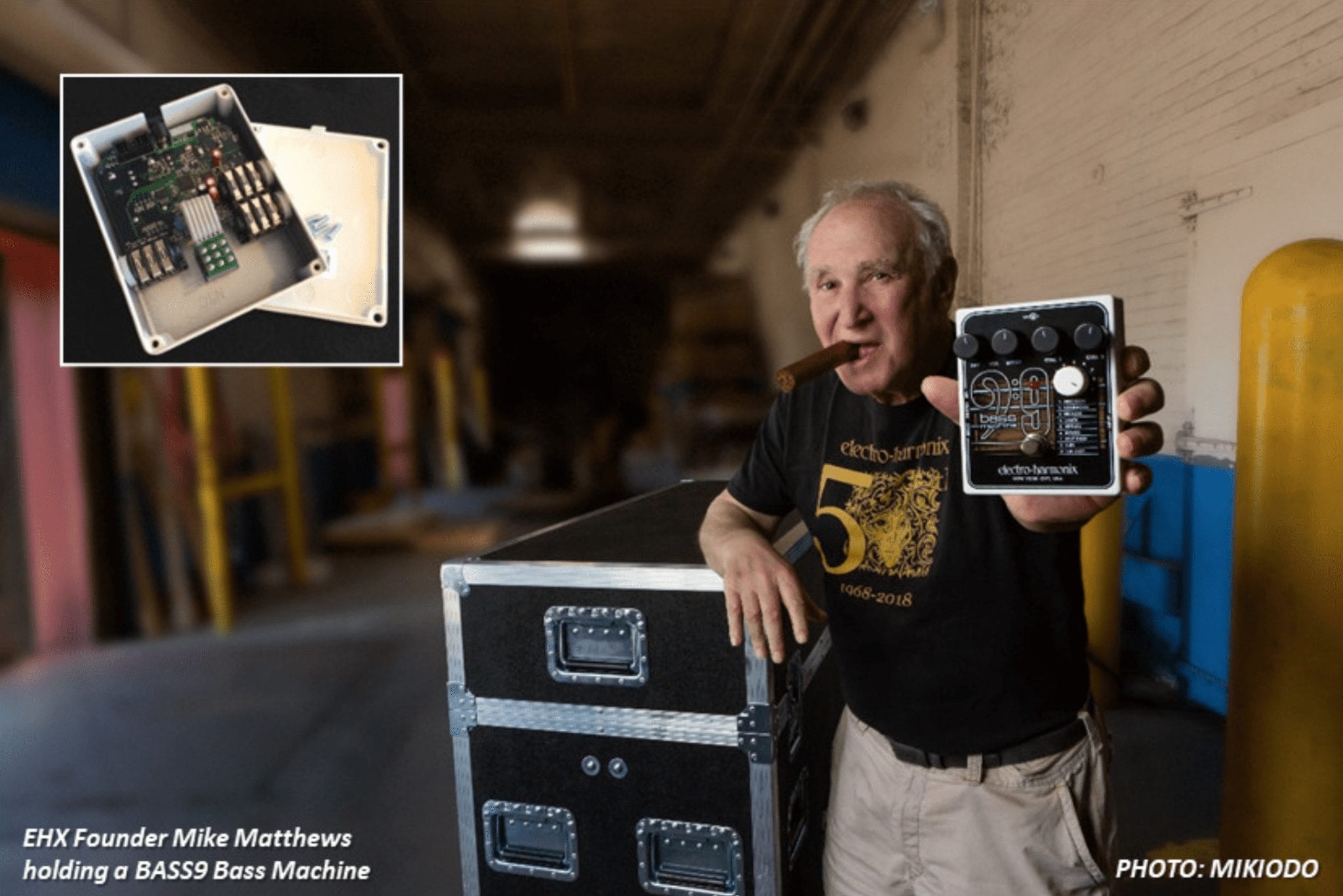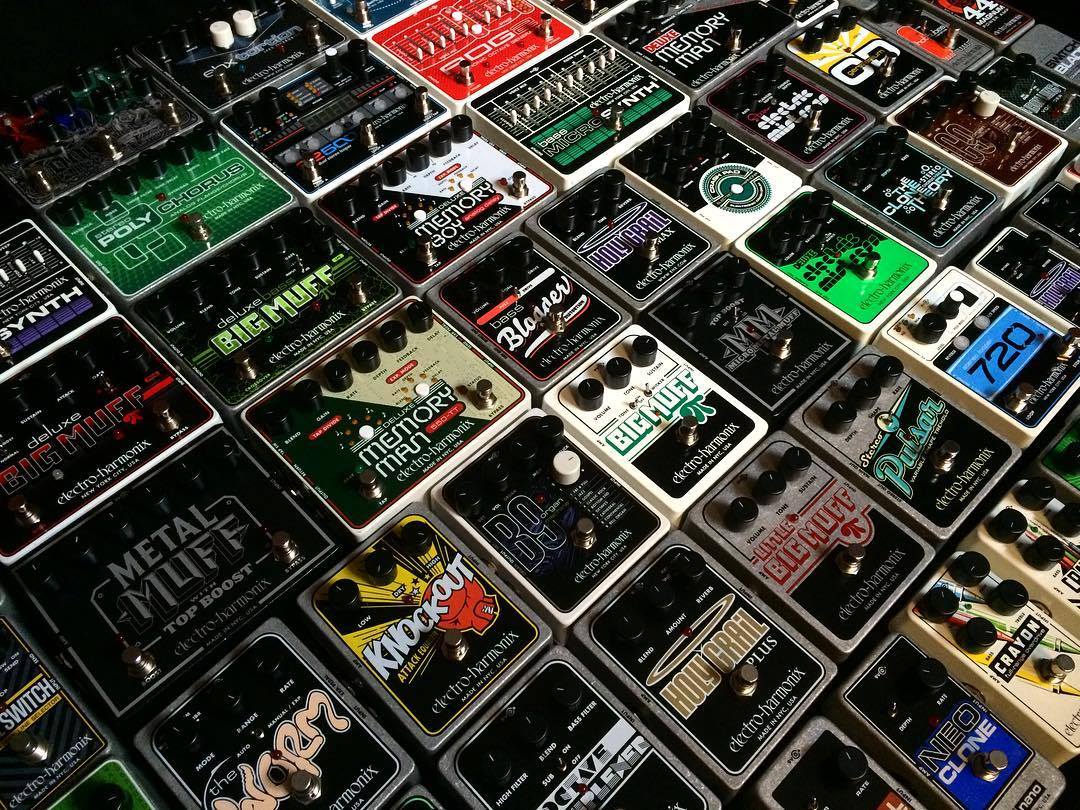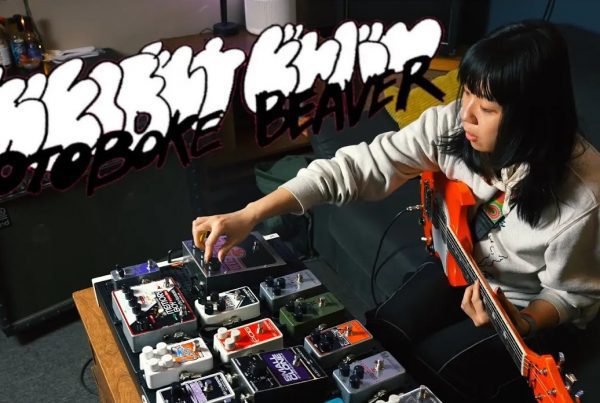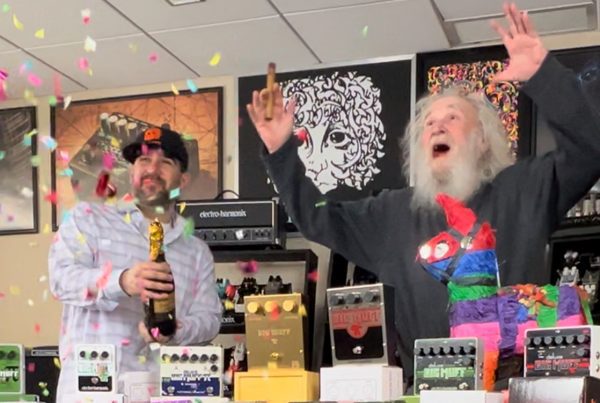
Analog Vs. Digital Pedals Do You Know The Difference?
Webster defines analog as “…electronic equipment, recordings, etc. in which the signal corresponds to a physical change, as sound to a groove in a phonograph record.” Digital is defined as: “…using numbers that are digits to describe all the variables involved in a calculation.” So how does this playout when it comes to effects?
Let’s take a look at analog and digital pedals… what’s the difference? And what about those pedals that are analog, but use digital controls? Here at EHX we make all three and there are compelling reasons to choose a specific design depending on what the pedal is meant to do.
Let’s start with some of the differences. In an analog pedal the signal path is continuous whereas in a digital device the signal must first go into an A/D convertor (short for analog to digital) and then, after being processed, through a D/A convertor (digital to analog) to go out to your amp. Those convertors transform your guitar’s signal… first into digital bits of information and then back to analog form.
Analog pedals have certainly been around longer. Back in 1968, when Mike Matthews founded Electro-Harmonix, our first pedals like the LPB-1 and Big Muff Pi were all analog. Even though engineers were developing digital technology, it hadn’t found its way into pedals. There were no presets, a forte of digital, and pedals were pretty much designed to do one thing-and those analog pedals did them well!

It’s fascinating how many times sounds which earlier generations found undesirable become a “thing” that new generations embrace. Consider the interval of the flat 5th, the devil’s interval, ‘diabolus in musica, a tritone that sounded so sinister it was disturbing. Of course now it’s commonplace, just like the sound of overdrive which the LPB-1 helped usher in. Who wanted anything but clean headroom when Leo Fender began building amps? No one… until they did!
And how about analog delays? The Memory Man was one of the first and it used bucket-brigade chips (ICs, integrated circuits). They’re called that because what they do with your signal is analogous to a line of fire fighters passing buckets of water to each other. It’s not the most sonically pristine process and the repeats are far from high fidelity, but it’s the pedal’s limitations that create an organic sound people love. There’s something about analog pedals that many players find irresistible. Maybe it’s because all the sounds we hear in nature are analog.
On the other hand, digital pedals can do things that analog pedals simply cannot. You need a polyphonic pitch shifter capable of transposing over +/- three octave range? Check, we’ve got it. How about a compact stereo looper with high-quality audio that will sync to MIDI clock, and provide reverse and octave effects at the touch of a button? No problem.

Clearly the EHX 9 Series is one of the most striking examples of how digital technology has forever changed and expanded the pedal landscape. Take the B9 Organ Machine that transforms the tone of a guitar into that of a convincing full body, electric organ or the Mel 9 which emulates nine of the coolest Mellotron® sounds ever. Digital technology made them a reality-without MIDI guitar mods—it’s a game changer! Once upon a time, digital technology got a bad rap for being cold or harsh, but as convertor circuit design and coding got better and better that’s become much more of a non-issue.
There’s another category, a hybrid, an analog product with digital controls. What that means is that the analog signal passes through some component or circuitry that is ultimately controlled by a digital device such as a microprocessor. The analog signal at the output jack is never digitized and does not pass through an A/D or D/A convertor. An example of this would be the Deluxe Memory Man w/Tap Tempo. It retains the analog delay’s much-loved sound and includes Tap Tempo/Tap Divide features that let a player always sync up to whatever groove he or she is playing along with. This is truly a Golden Age of Pedals. Analog, digital and analog devices with digital control provide more choices than ever, but regardless of the technology under the hood, the important thing is how they help us express ourselves and spark our creativity. Everyone has played an old lick into a new pedal and been wowed by how that riff takes on new life!



